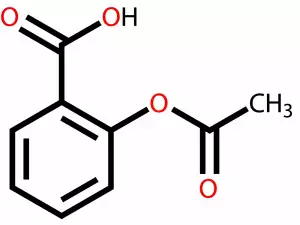Arachidonic acid is a polyunsaturated fatty acid found in phospholipids. This is a group of substances that are a natural part of cell membranes and are present in high quantities in the muscle, liver and brain tissues of humans and animals.
Arachidonic acid has proven itself in regards to anaerobic metabolism over and over again. It boosts the peak power generated by the muscles. This is very characteristic for the severe strain for brief intervals of time.
Functions of Arachidonic Acid
In essence, arachidonic acid is a precursor of specific signaling molecules (eicosanoids), by which the human body regulates emerging inflammatory processes.
Regulation of these molecules is one of the most complex biochemical mechanisms to balance in the body. It greatly depends on the balance of omega-3 and omega-6 fatty acids in consumed food.
Besides maintaining immunity, arachidonic acid is linked to the processes of recovery after over exhaustion, hard physical labor and long workouts.
The presence of arachidonic acid is an exceptionally important factor for the quick recovery of muscle tissue because it improves membrane transport of substances for the quick replenishing of muscle cells.
It is thought that arachidonic acid is a regulator of critical importance for the processes of local muscle growth. This fatty acid is among the most common acids found in brain tissue.

Regarding the brain tissue, arachidonic acid provides flexibility to nerve tissue membranes; it plays a role in repairing them; it stops free radicals that manage to get past the blood-brain barrier.
Choosing and Storing Arachidonic Acid
Arachidonic acid is a product that is added on its own to various formulas for food supplements and is rarely in combination with other omega-3 and omega-6 essential fatty acids. Unlike omega-6, arachidonic acid is not found in meal replacements, protein shakes and fortified foods.
Benefits of Arachidonic Acid
As mentioned, the main function of arachidonic acid is to supplement a healthy diet in order to guarantee optimal body function, along with some other essential fatty acids.
In some cases, arachidonic acid is taken on its own - in the battle against Alzheimer's; to modulate immunity; as a powerful antioxidant; in the battle against certain cancer diseases; against manic-depressive disorder. Arachidonic acid also finds application in sports.
Specifically in sports, arachidonic acid is linked to the following parameters: increased endurance, increase in maximum realized power, increased strength, as well decreasing levels of a specific protein which regulates inflammation in strained muscles.

Taking Arachidonic Acid
There have been studies done with daily doses ranging from 840 - 2000 mg, for periods up to 50 days. The typical dose is 1000 mg daily with food. The confirmed period for safe intake is indeed 50 days.
After a person takes arachidonic acid with food, it gets absorbed into the body through the lining of the stomach and duodenum. It is distributed among the rest of the tissues via the lymph and blood. Once they reach their final destination, arachidonic acid molecules become actively involved in the synthesis of valuable substances.
Dangers of Arachidonic Acid
Numerous studies have proven the exceptionally good tolerability of arachidonic acid. It can be used by pregnant women, children, breastfeeding women and newborns but only under strict medical supervision.
Unfortunately, arachidonic acid also possesses numerous adverse effects. It shouldn't be taken if the person is suffering from any of a series of autoimmune diseases, or from diseases whose symptoms include chronic inflammation - anemia, Alzheimer's, atherosclerosis, allergies, arthritis, obesity, diabetes, heart failure, heart attack.
Arachidonic acid should also not be taken if suffering from digestive problems, gastritis, ulcers, fibrosis, fibromyalgia, lupus, kidney failure.


















Comments